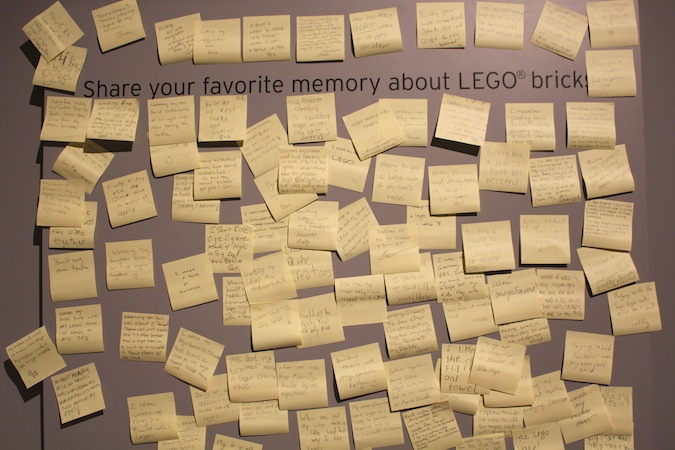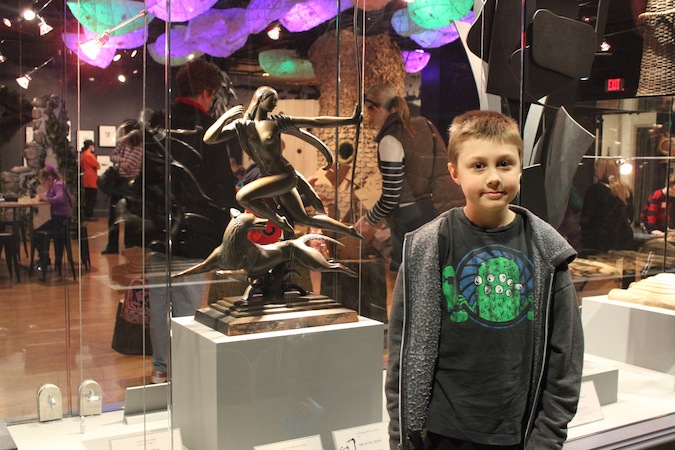
Navigating nudity in art during a visit alone or with family and friends can be challenging for many of us. Indeed, I have been uncomfortable making sense of some works that contain nudity on view at CMA. For me, every work is unique; some works with nudity trigger feelings of discomfort and even anger, some are rather innocuous.
My position on nudity in art can be boiled down to a few basic statements.
- Many works of art depict nudity.
- CMA owns and displays works with nudity in the Center for Creativity, in special exhibitions, and in all other galleries.
- Visitors should expect to encounter art with nudity during a CMA visit.
- Some works with nudity are unsettling to some viewers.
- Discomfort is not always a bad thing.
In this blog I do not intend to address statement #1. Let’s please accept this fact and move on.
I can speak to statements #2 and #3. I admit that CMA has not been explicit about our policy on nudity in art. Recently, a visitor did express dismay to find works with nudity in the Center for Creativity. Her comments did not explain why she did not expect works with nudity in the Center for Creativity. Perhaps because many families with children congregate in the Center, she believes it is not appropriate to display art with nudity there. Or perhaps she objects for religious reasons. I cannot know for sure.
Therefore, I want to take this opportunity to be very clear about our policy on nudity in art.
Attention all CMA visitors: You may encounter works of art with nudity in any gallery in our museum!
I am not suggesting that we intentionally plan for works with nudity in every gallery. In reality, here is what usually happens: a curator selects a work because it is innovative or representative of a particular movement, style, or theme. And sometimes this work includes nudity. For example, Diana is a sculpture that is currently on view in the glass case adjacent to the Wonder Room. I selected this elegant sculpture because of the subject matter; Diana, Roman Goddess of the hunt, is typically associated with the forest and animals. The Wonder Room showcases many works with a woodland theme. I admit that I did not consider Diana’s small, unclothed breasts when I selected this sculpture. But as a result of this visitor comment, Diana’s breasts have been on my mind. So, last week I wandered through the galleries in the Center for Creativity to chat with other visitors and gain more insight.
As luck would have it, I met a lovely family looking at Diana and the other sculptures on view in this case. I directed my most important question to mother Amy and 9-year old Gavin, “So, tell me how you feel about the nudity in this sculpture. (I pointed to Diana) I am asking you because a visitor expressed concern that we placed this sculpture here.” Amy laughed. She shared this story. On the drive to the Museum, Gavin asked, “Will there be naked people?” She explained to him that there would probably be some naked people in the art. Amy also added, without provocation, that she welcomed and supported her son’s “curiosity.” She wants her children to be curious about the world. She pointed out that Gavin was comfortable looking, talking about, and even taking photos of the Diana sculpture.
Here is what I noticed: Amy and her family expected to encounter nudity during their museum visit.
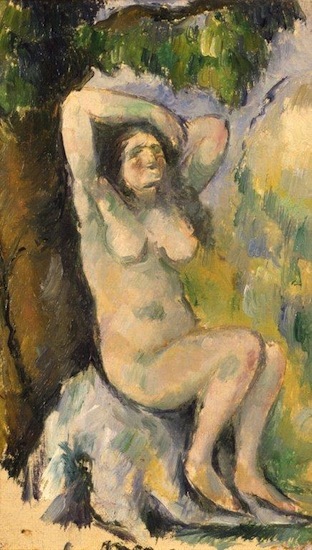
I said goodbye to Amy and her family and met another family. Jim and his two children were drawing in the Big Idea Gallery near Cezanne’s Seated Bather. The “bather” in this painting is a naked woman nestled in a woodland setting. Chatting with Jim, I learned that he, like Amy, expected to encounter nudity during this visit with his family.
I applaud Amy and Jim for preparing their families for one of the almost universal truths of an art museum visit: Many works of art contain nudity and art museums display these works. Amy and Jim were comfortable with this fact. But what about visitors who aren’t comfortable with seeing art depicting nudity during a visit?
Certainly, I encourage every visitor to gravitate towards works that have personal relevance or interest. I want every visitor to have a positive and meaningful experience. But I also hope to encourage every visitor to approach our Museum as a safe place to explore ideas and topics that may be challenging and uncomfortable. Why? Because great works of art are chock full of imagery and ideas and stories that shine a light on difficult issues, such as nudity and sexuality.
This reminds me of the advice offered to me regularly by my massage therapist, “Pain is our best teacher.” I know what she means. Most days, I plod through my daily routines without paying much attention to my weakened joints. I’m lazy about the way I get out of the car or sit in the chair. But when I’m in pain; I must pay attention. The discomfort forces me to confront some issues I would rather avoid or ignore about myself. My pain shines a light on my habits, my approach to living, and well, my vulnerabilities.
Great works of art can be like my pain. They can alert us to some serious issues that we would prefer to ignore. In the course of our daily lives, we may not have to think seriously about poverty or violence or our sometimes beautiful, sometimes ugly naked bodies. Most days we can avoid these issues that cause us discomfort. But a visit to an art museum can be akin to ripping off a Band-aid. Prematurely. We can quickly feel exposed and vulnerable. At CMA, many great works of art on view do address difficult topics. These works challenge us to pay attention, to be aware, to take notice of the things we may or may not want to think or talk about. But like my experience with back pain, if we take the time to be mindful about what triggers our discomfort with issues like nudity in art, we can learn a thing or two about ourselves, our friends and family, and our communities.
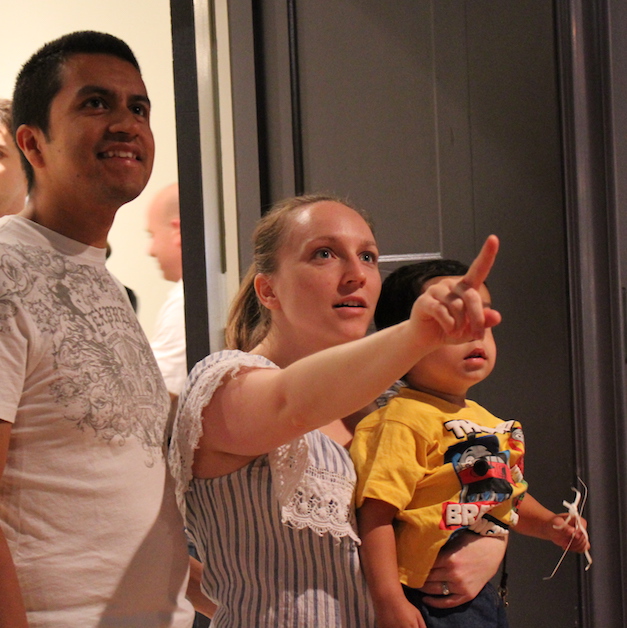
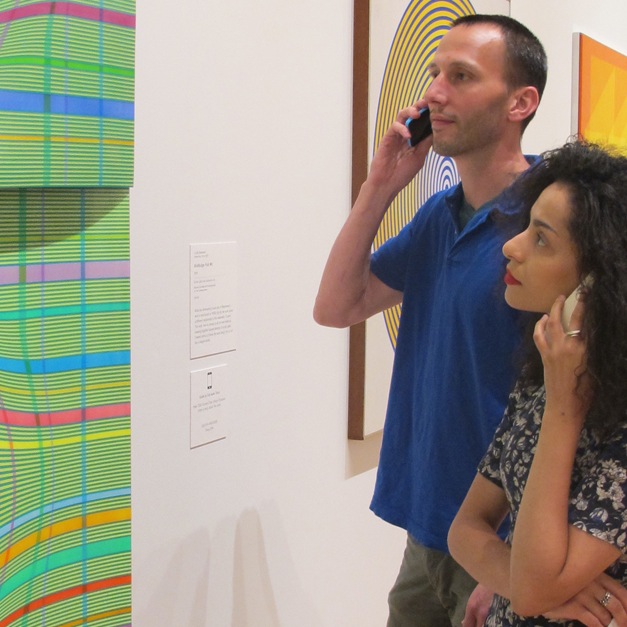

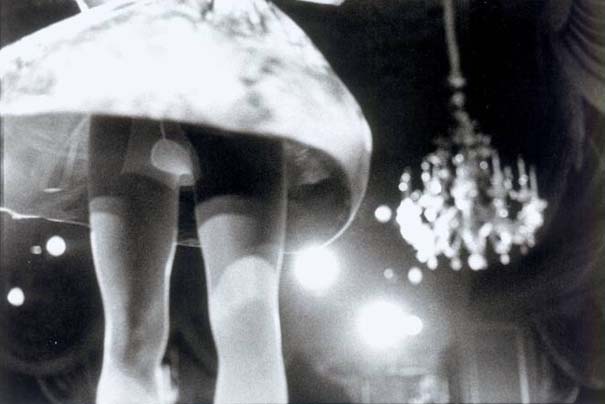
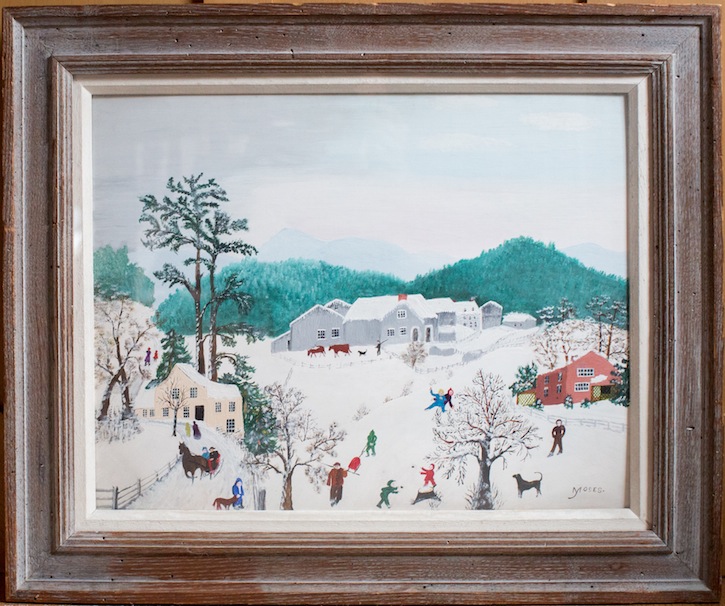


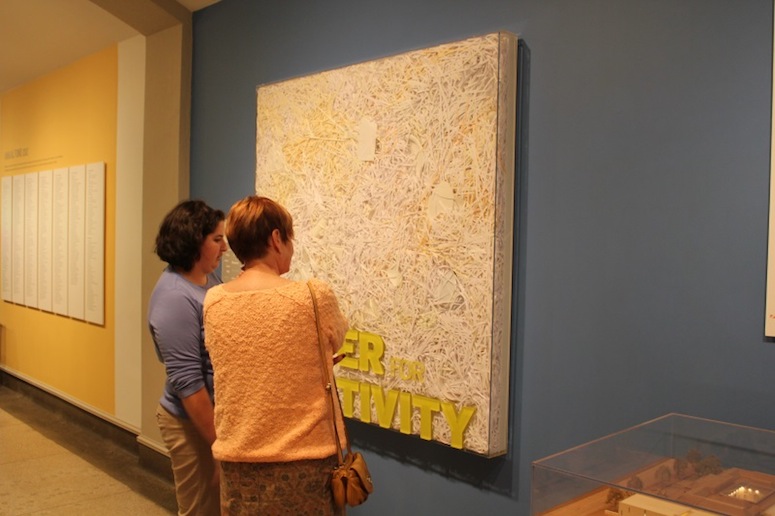
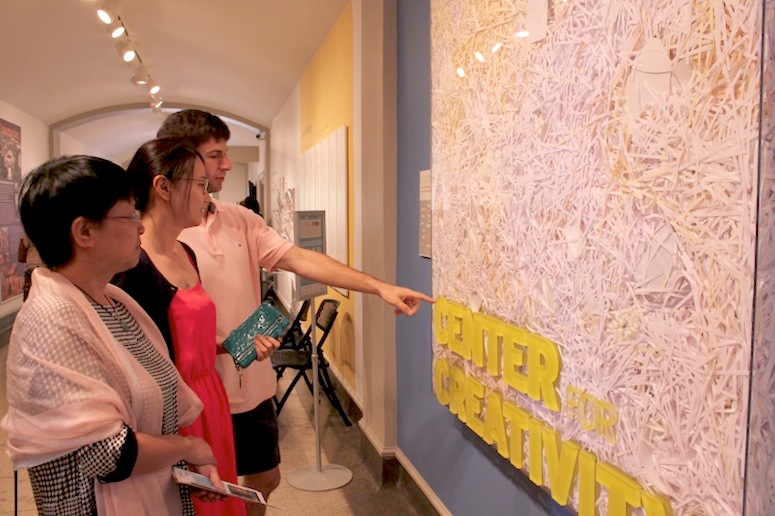 This particular sign has been on display for just a few weeks. In that time, I’ve chatted with several people engaged in the hunt for white objects and I am somewhat surprised by our conversations. Several visitors think this sign is, in fact, a work of art. Others admit that they didn’t realize that it is actually a sign. (The lower portion of the box has large dimensional green words that spell out Center for Creativity.)
This particular sign has been on display for just a few weeks. In that time, I’ve chatted with several people engaged in the hunt for white objects and I am somewhat surprised by our conversations. Several visitors think this sign is, in fact, a work of art. Others admit that they didn’t realize that it is actually a sign. (The lower portion of the box has large dimensional green words that spell out Center for Creativity.)


